- Sun 19 June 2016
- Blog
- #Project Management
My summary of the module 1 of the course "Principles of Project Management".
Project vs Ongoing operations
Projects are:
- one-off, temporary
- have specific start and end dates
- have limited resources
- involve uncertainty
- will implement change
- and create something unique – whether it is a new product, a new service or a result.
Ongoing operations are:
- ongoing,
- repeat tasks staff are already familiar with
- have resources permanently assigned to them
- and are the day to day duties of a workplace.
Project management
Managing a project from its beginning to a successful outcome is short definition of Project Management, and may involve the following actions.
- Project outcome is to be agreed by the stakeholders (Project Sponsor, Project Manager, Project Customer).
- Clear allocation of resources, time and budget.
- A Project Management Plan must be written that outlines what will be built (scope) in which sequence and time durations (time) using what resources (cost and procurement) and by whom (human resources), to defined standards (quality).
- Considering assumptions and constraints that may affect the project (helping to identify potential project risks).
- Maintaining a balance between key constraints: scope, time, cost, resources and risk and quality.
- Maintaining good communication so that stakeholders have their requirements, concerns and expectations listened to and addressed.
- Monitoring and controlling are important throughout execution to check the execution of the project against the plans early agreed to.
- The continuous improvement of knowledge and information regarding the project, and the resulting refinements to the plans
- At the end there needs to be closing processes to make sure all work on the project has been completed, the deliverables formally verified and handed over, lessons learned documented and all documentation archived for use and reference by future projects.
Below are the key success factors for projects.
Processes:
- Having a clear project scope and objectives
- Using good project management processes
- Planning well and then tracking and reporting progress well
People:
- Having well trained, experienced Project Managers
- Having Stakeholder & management support
- Involving end users at the concept and planning stages
Attitude:
- Realistic expectations
- Communicating well
- Emotional Maturity
The project life cycle
Concept -> Develop -> Execute -> Finish
Concept is a phase when a project is thought, investigated for feasibility. The document, e.g. contract or project charter, that describes the project and agreements between stakeholders is an outcome of this phase.
Develop is where the project scope, time, cost, quality, resources, communication, risk and required procurement procedures are developed. At the end, Project Management Plan containing information about all above should be produced.
Execute is where we put Project Management Plan into action. To avoid project becoming stuck, we should monitor and control the work during this phase. If there is any variance between the plan and the actual progress, that could be a trigger for action. Either agree on changes being made, or bring the execution back into alignment w/ the plan.
Finish is where formal verification and acceptance of the project (i.e. hand-over to the customer). It also involves identifying lessons learned, closing procurements, and archiving project documentation.
Typical project life cycle figure:
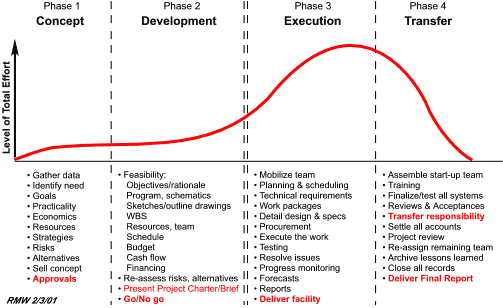
Nine knowledge areas
According to PMBoK, knowledge areas are the areas necessary for a PM to manage projects effectively.
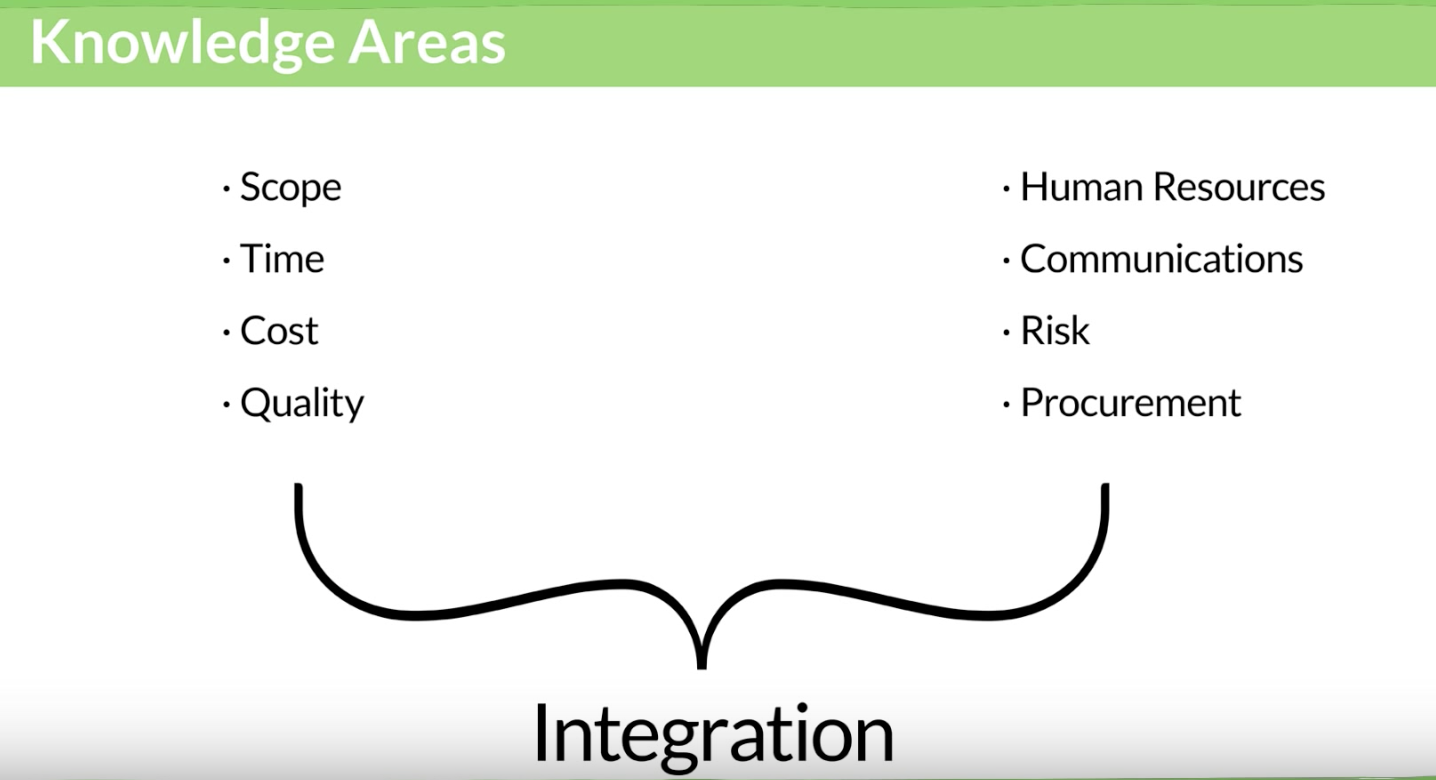
The four core areas:
These are the principal functions of project management and the main constraints of a project.
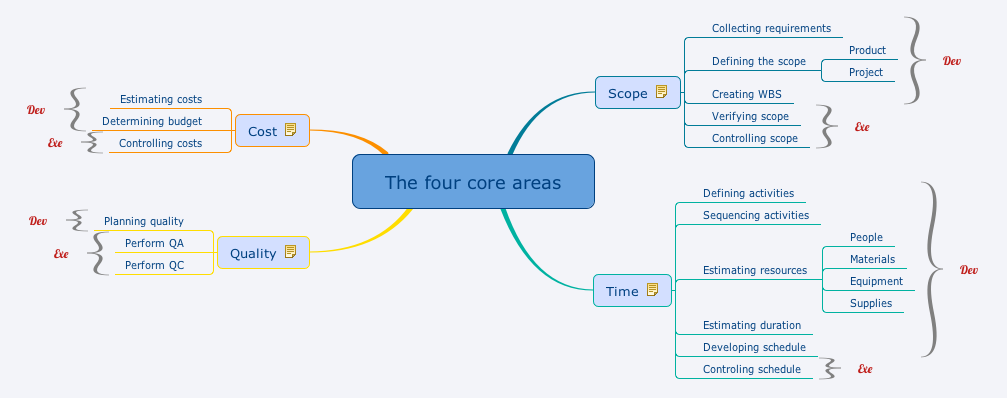
Four facilitating areas
The main purpose of the four facilitating areas is to manage the core functions effectively.

Integrating
This is where the main work of the Project Manager lies, as it is where all the 8 separate threads of knowledge are drawn together in a cohesive manner and documentation created to manage the project.

Five Management Process Groups
There are 42 management processes that PMBoK recommends and that have been listed in nine knowledge areas. For simplicity, these 42 processes are placed in 5 groups:
- Initiating
- Planning
- Executing
- Monitoring & Controlling
- Closing
Visualisation of processes and their knowledge areas and path through project:
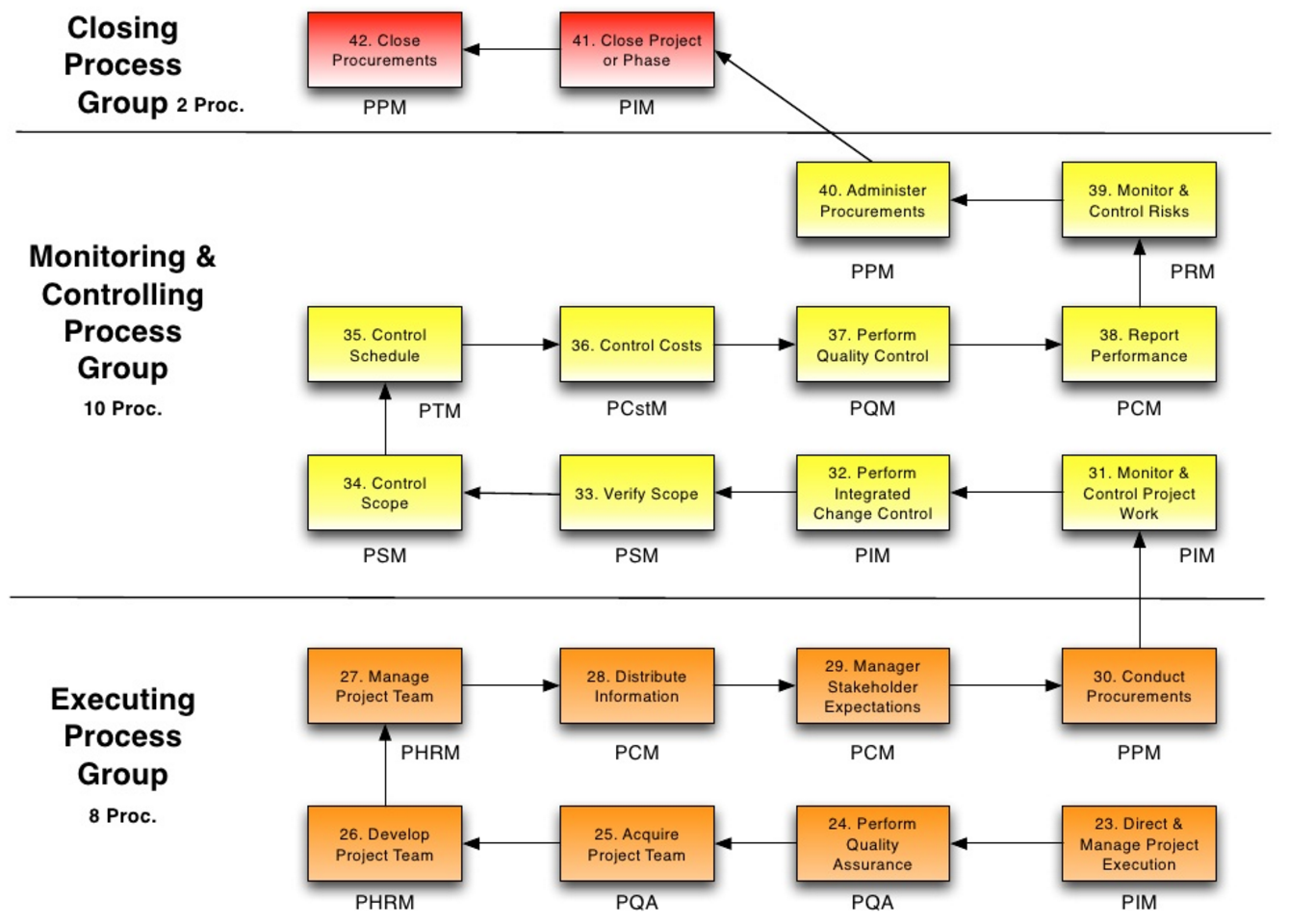
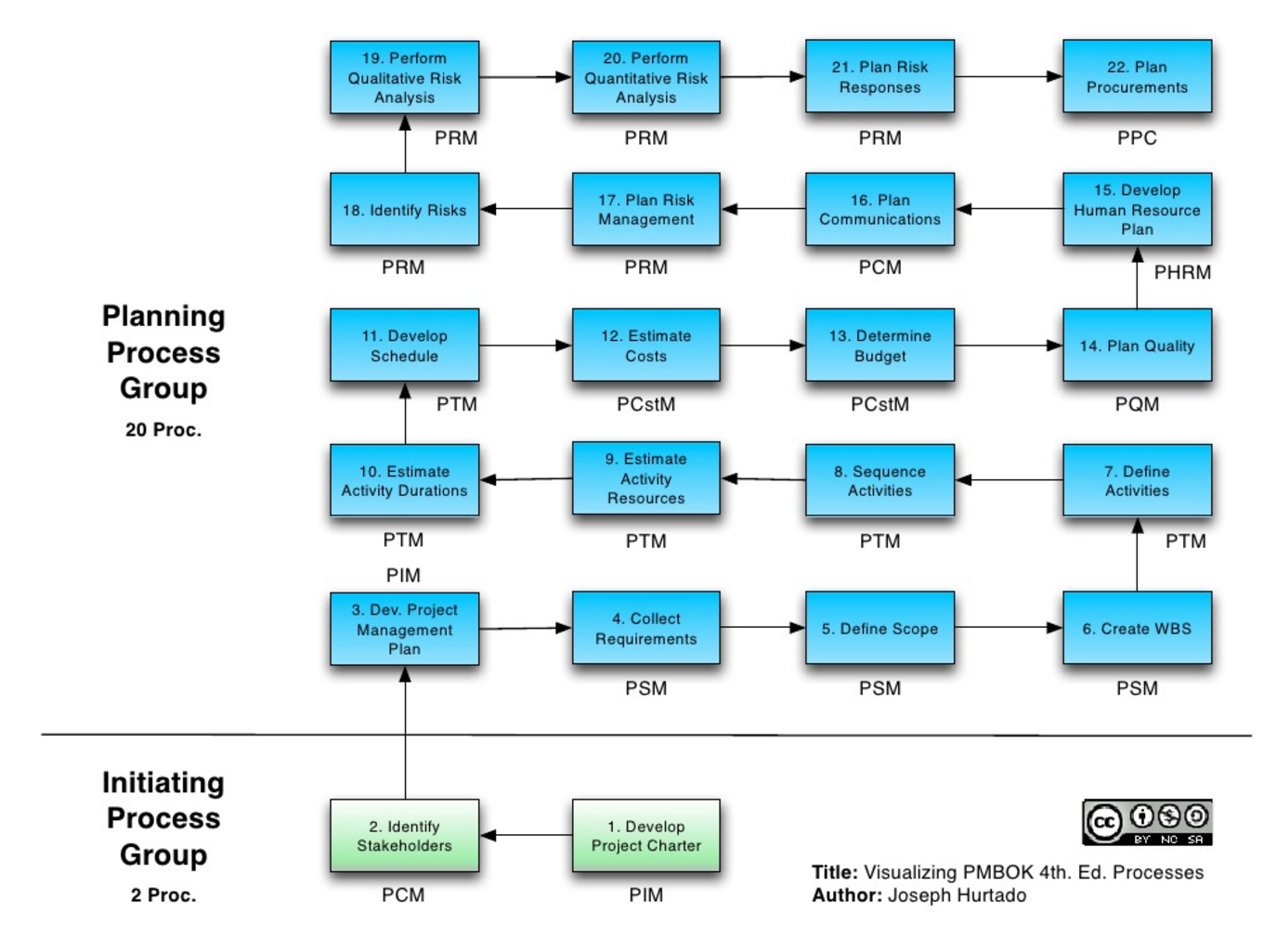
Don’t confuse the five process groups with the four life-cycle phases (Concept, Develop, Execute, Finish). The life-cycle covers the period of time from the very start of the project (its inception) through to its eventual close. The five process groups are how you manage the project, and can be iterative and may be repeated and actually applied across phases of the project rather than its entire lifecycle.
Main Project Constraints
Traditionally, projects have been referred to as having a “Triple Constraint” of scope, time, and cost. Changing in any of these affects the other two. And balancing of these constraints is an essential part of managing a project properly. Quality is likely affected by the Triple Constraint, so it is referred to as the fourth constraint.
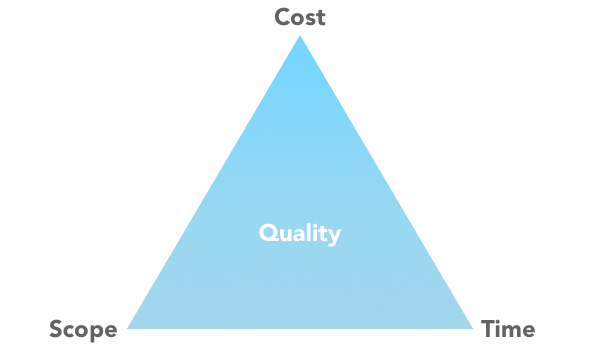
According to newer definitions, risks and resources are also recognized as common constraints.
Using constraints can be useful when explaining to stakeholders how a change they request may have consequences elsewhere.
Balancing proportion depends on the nature of the project. E.g. in projects where people life involved, there should be emphasis on the Quality and Risk constraints.
Benefits of Project Management
- Improved customer relations
- Shorter development times
- Lower costs
- Higher quality and dependability
- Better control of internal resources
- Higher worker morale
- Provides a competitive advantage in the market place